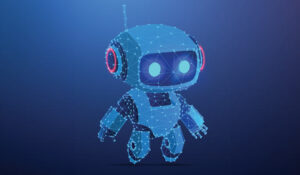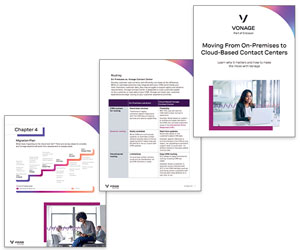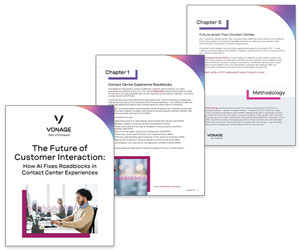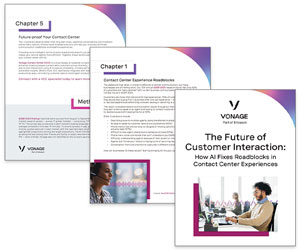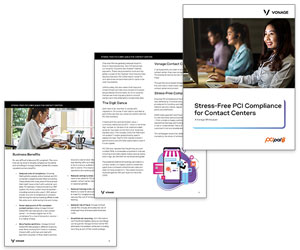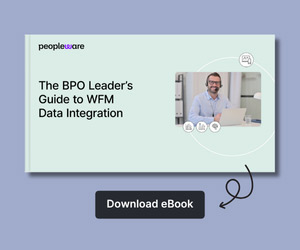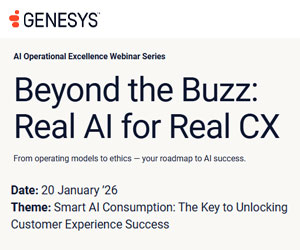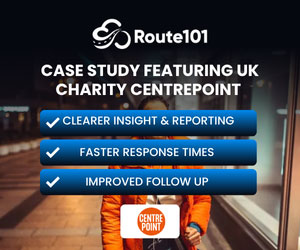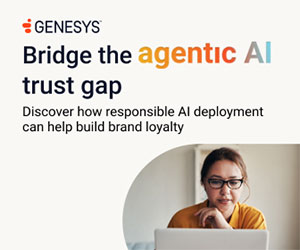Vonage spotlights how agentic workflows can improve the accuracy and capabilities of the AI tools you use.
A recent report from Deloitte states that 25% of enterprises using GenAI plan to deploy AI agents in 2025. These virtual agents are powered by technology such as large language models (LLMs) and natural language processing (NLP).
While it sounds good on paper, the results haven’t exactly been stellar. The top-performing AI agent in a recent test only reached a resolution rate of 24%.
Enter agentic workflows.
What Is an Agentic Workflow?
An agentic workflow is an iterative approach to leveraging AI technology in the form of AI agents to automate tasks.
Unlike zero-shot processes (where a model is prompted to generate ultimate responses without receiving examples of desired outputs), within an agentic workflow, the AI agent breaks down problem-solving into smaller, connected steps and sub-categories.
The AI agent evaluates each step to achieve a designated task or goal with a higher level of accuracy.
In an agentic workflow, AI agents are granted autonomy to solve problems independently. The AI makes decisions and executes tasks without human input. It does this by analyzing a series of steps, reflecting on its work during each stage, and reaching a solution.
As real-time decisions are made, the AI evaluates the results. This facilitates continuous learning, meaning the agent learns and improves over time.
Agentic workflows, which can also leverage tech like conversational AI, help businesses use AI agents more efficiently and dynamically. As the AI learns and processes improve, you can explore other applications for the business.
Agentic Workflows vs. Traditional Workflows
Agentic workflows and traditional workflows have some similar goals but vastly different approaches, with the latter being static and more predictable. These traditional AI or automation workflows must follow pre-defined rules and design patterns.
In short, traditional workflows are:
- Predetermined – They use a linear or structured approach, solving problems following a rigid, designed sequence.
- Rules-based – Decisions are based on pre-existing rules or logic and reasoning.
- Reliant on human input – Humans often drive decisions and task completion.
- Limited in scalability – They are difficult to scale since they rely on many manual processes and human intervention.
- Less adaptable – They are usually unable to handle unexpected queries or changes in the environment.
In contrast, agentic workflows rely on autonomy. AI agents independently gather information, analyze it, and make decisions. Methods and understanding are adjusted and improved over time.
Agentic workflows are typically:
- Autonomous – AI agents require minimal human input and supervision. They make decisions according to their own logic.
- Highly adaptable – AI can adjust to dynamic conditions and unexpected queries.
- Evolving – Continuous learning means AI agents improve performance and accuracy over time.
- Scalable – They are easy to scale for large applications and use cases because human team members are rarely needed for operation.
Main Components of AI Agentic Workflows
Agentic workflows in AI are made of many components. Together, they foster autonomous decisions and adaptive problem-solving:
AI Agents
Artificial intelligence agents are the primary driver of agentic workflows. They ultimately make the decisions and execute the tasks. Self-reflection and continuous learning guide the agents to greater efficiency and accuracy.
AI agents are trained to have specific skills and attributes for designated use cases. These agents can also access tools and resources to learn and enhance their capabilities.
Large Language Models (LLMs)
Large language models or LLMs are at the heart of AI agents and, therefore, agentic AI workflows. They’re what allow for sophisticated language processing and generation.
Without the integration of an LLM, an AI agent couldn’t demonstrate the human-like understanding or contextual outputs that are hallmarks of an agentic workflow.
Data-Gathering Tools and Feedback Mechanisms
The LLM at the heart of an agentic workflow needs access to information outside of the data used in its initial training.
Tools like external datasets and feedback mechanisms such as human-in-the-loop (HITL) provide such access and help to improve both the AI agent’s decision-making and its ultimate outputs.
Prompt Engineering
The quality of the prompts provided is key to the accuracy and success of an agentic workflow. Prompt engineering is the crafting of queries to help LLMs – and, therefore, AI agents – better understand language, nuance, and intent. This, ultimately, produces better quality, more accurate outputs.
Use Cases for Agentic Workflows
Like most AI technologies, we’re still realizing the full potential of agentic workflows. The agentic AI market was $5.1 billion in 2024. A Statista report projects it will increase annually by 44%, eclipsing $47 billion by 2030.
Why such rapid growth? Agentic workflows have many flexible, dynamic real-world applications. Let’s examine some of the most common use cases:
Sales Support and Customer Service
Agentic workflows can assist with many customer-facing activities to boost engagement. For example, an AI agent may offer live sales support on a website. Agentic AI can also access knowledge bases and field questions about the product.
Contact centres already rely on technology such as interactive voice response (IVR) menus to deflect calls. Agentic workflows can further elevate self-service and improve the AI customer experience. Support AI agents can interact with customers, give human-like responses, and escalate interactions when needed.
Supply Chain Management
Agentic AI can monitor inventory and supply chain levels in real time. At a basic level, this allows you to automate reordering and managing stock.
Agentic AI excels in making strategic decisions that optimize resources and reduce costs. ML algorithms enable the agent to identify trends and make predictions. As more supply chain data comes, along with AI self-evaluation, the model becomes more accurate.
Human Resources
Agentic workflows can speed up and improve the hiring and recruitment process. Candidate screening can be automated, speeding up hiring and removing unconscious bias.
AI agents then analyze skill assessment and interview data. Using this feedback, they adjust tactics, becoming more efficient at finding the right candidates. This saves your team valuable time.
Banking and Financial Services
Agentic AI can handle a diverse range of tasks in the financial services industry. Real-time analysis and autonomy mean the AI can make quick decisions to buy and sell at razor-thin margins. Agentic workflows also enhance fraud detection monitoring, as they can learn and identify new cybercriminal techniques.
Healthcare
AI in healthcare administration also has myriad use cases. Agentic AI can automate routine tasks and enhance patient care. AI agents can manage patient scheduling, optimizing appointment slots for need and wait times.
They can also access electronic health records while maintaining compliance. With patient information available, agents provide personalized reminders and after-care instructions.
IT Operations
In IT operations, agentic AI can streamline system maintenance and support. AI agents can monitor network performance, detect anomalies, and initiate corrective actions.
No human IT professional is required for this process. This proactive approach minimizes downtime and frees IT staff to focus on strategic initiatives.
Advantages of Agentic Workflows
Agentic workflows introduce new capabilities and applications for using AI and AI-related tools. Let’s examine some of the primary advantages of building agentic workflows into your business operations:
- Increased efficiency – You can automate repetitive tasks and reduce the time to reach resolutions, saving your resources for other business processes.
- Higher productivity – Agentic AI takes over more tasks. Your team is free to handle the highest-level activities.
- Better decision-making – Real-time inputs and outputs keep you better informed.
- Autonomous and agile execution – This reduces the need for manual intervention. Agents analyze data in real time, making decisions without the need for human team members to get involved.
- Scalability – Workflows and agent AI can scale with your growth and demand. It takes less time to increase workload capabilities.
- Increased flexibility and adaptability – Workflows are designed to manage new challenges. AI agents learn and adapt to changing situations and environments.
- Cost savings – With expanded roles and use cases, AI agents can further reduce costs like payroll and office infrastructure.
Agentic Workflow Examples
Effective agent workflows enhance what modern technology like GenAI can accomplish. We’ve already looked at several use cases spanning many industries. However, let’s now take a closer look at some agentic workflow examples:
Multi-Agent System
A multi-agent system (MAS) comprises multiple agents working together toward a common objective. A typical MAS workflow starts with a user prompt fed to a proxy agent that serves as the “face” of the interaction. An orchestrator agent then takes over, coordinating sub-tasks and delegating to AI specialists.
Subagents are given goal prompts and return their outputs to the orchestrator. Using multiple LLMs, the orchestrator puts together the solution. An editor agent revises the result before the proxy agent delivers the final output to the user.
What Does the Future Hold for Agentic Workflows?
We’re still at the tip of the iceberg for what’s possible with agentic workflows. McKinsey reports that AI adoption reached 72% in 2024, and we can only expect that number to increase.
Soon, using AI for business processes will become the norm. The best way to maintain distance from the competition is to go a step further. Agentic workflows give you greater possibilities for AI use cases.
However, you only have so much time to stay ahead of the curve. Gartner predicts that agentic AI will make 15% of day-to-day work decisions by 2028.
Alongside that broader adoption, the sophistication of agentic AI looks set to keep developing apace, too. As machine learning techniques evolve, AI agents will be able to achieve more nuanced understandings of business contexts and individual circumstances.
That will most likely mean far greater capacity for businesses like yours to deliver personalized customer experiences at scale.
This blog post has been re-published by kind permission of Vonage – View the Original Article
For more information about Vonage - visit the Vonage Website
Call Centre Helper is not responsible for the content of these guest blog posts. The opinions expressed in this article are those of the author, and do not necessarily reflect those of Call Centre Helper.
Author: Vonage
Reviewed by: Rachael Trickey
Published On: 13th Jun 2025 - Last modified: 18th Jun 2025
Read more about - Guest Blogs, Vonage






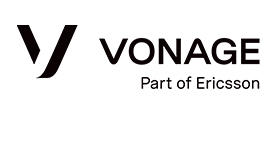 Vonage is redefining business communications, helping enterprises use fully-integrated unified communications, contact centre and programmable communications solutions via APIs.
Vonage is redefining business communications, helping enterprises use fully-integrated unified communications, contact centre and programmable communications solutions via APIs. 
